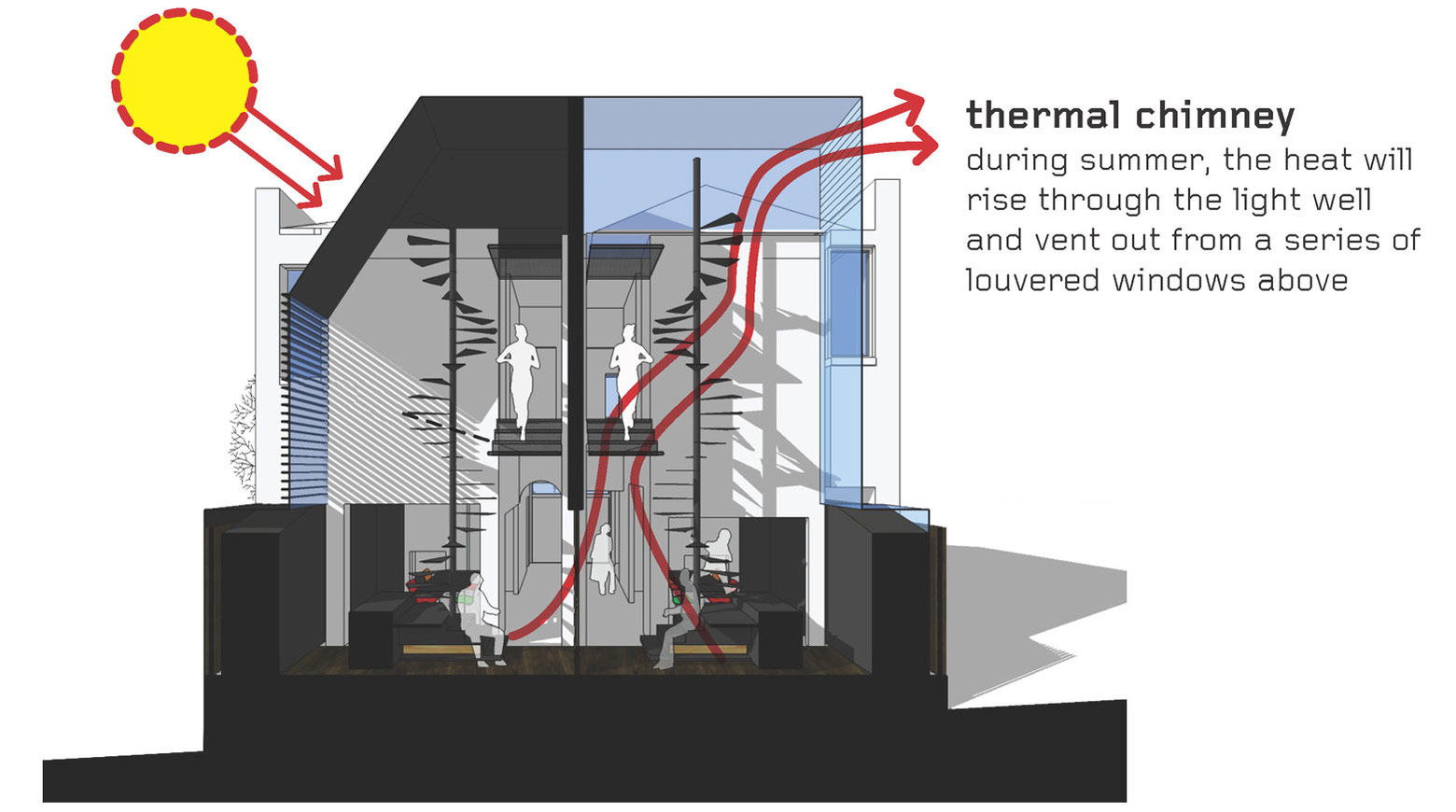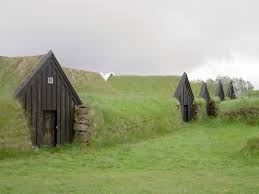Week 11 - Energy
1. "Green" Design
1.6. Cooling
 The efficacy and efficiency of cooling methods is somewhat dependent on the nature of the climate. For this reason, there are many options available but not all will be suitable for a given climate. For example, efficient cooling methods in hot, dry climates may include thermal chimneys and evaporative cooling (image courtesy of www.freshpalace.com) Also Earth sheltering (see image courtesy of Wikipedia - sheltering in Iceland) and Earth coupling techniques take advantage of the constant temperature of the ground's thermal mass at a climatic driven depth. Sheltering also protects from severe weather such as strong winds.
The efficacy and efficiency of cooling methods is somewhat dependent on the nature of the climate. For this reason, there are many options available but not all will be suitable for a given climate. For example, efficient cooling methods in hot, dry climates may include thermal chimneys and evaporative cooling (image courtesy of www.freshpalace.com) Also Earth sheltering (see image courtesy of Wikipedia - sheltering in Iceland) and Earth coupling techniques take advantage of the constant temperature of the ground's thermal mass at a climatic driven depth. Sheltering also protects from severe weather such as strong winds.
 Thermal mass cooling may be used in climates with a large diurnal swing. A large indoor building mass absorbs heat during the day (and releases during the night).
Thermal mass cooling may be used in climates with a large diurnal swing. A large indoor building mass absorbs heat during the day (and releases during the night).
In humid climates, dehumidification may also be required as lowering humidity can make warmer temperatures more tolerable.
Radiant cooling is not a passive technology but is very efficient. This often involves running cool water through floor slabs, walls or ceilings.

(image courtesy of www.productfind.interiordesign.net)